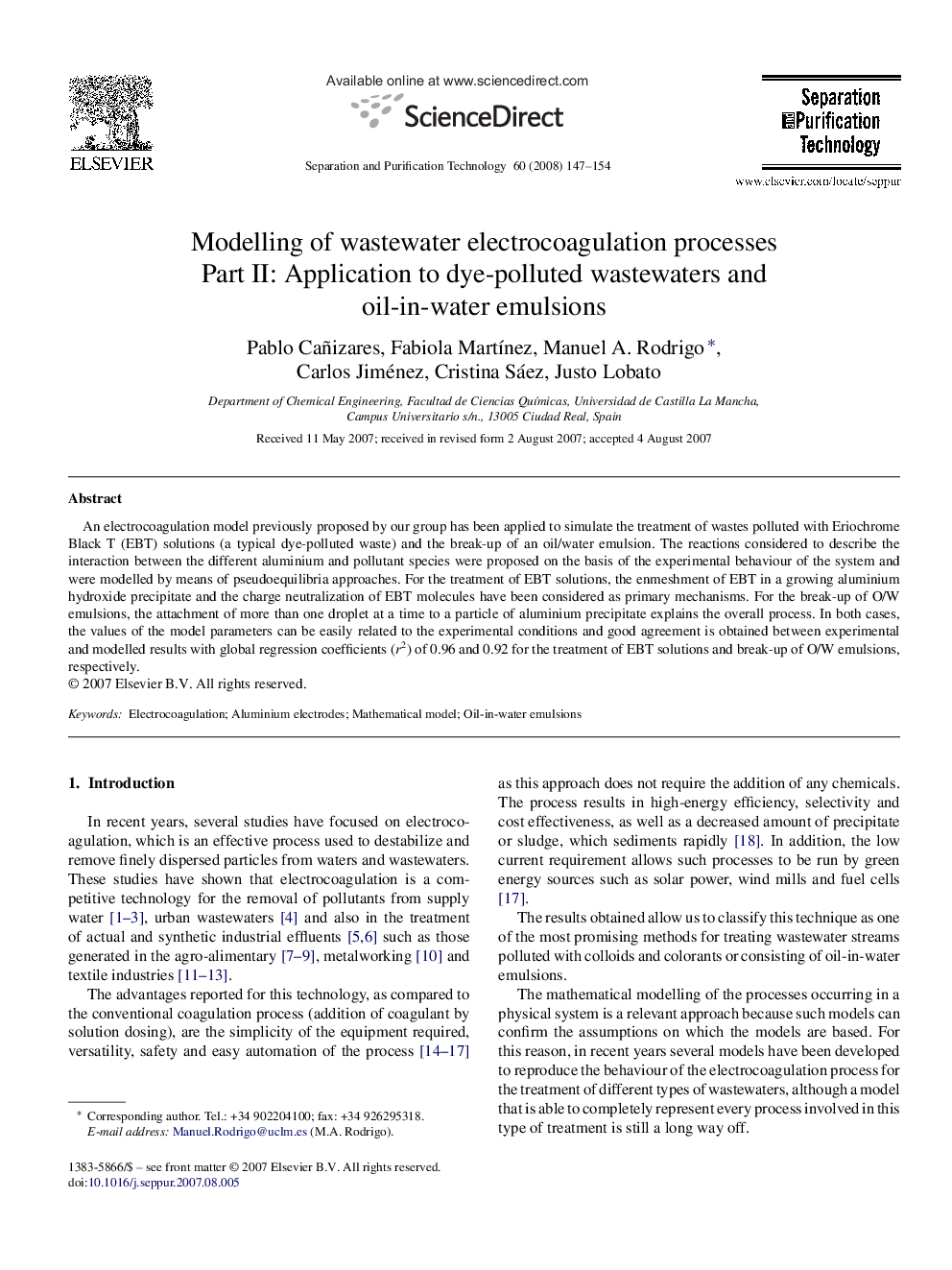| Article ID | Journal | Published Year | Pages | File Type |
|---|---|---|---|---|
| 643957 | Separation and Purification Technology | 2008 | 8 Pages |
An electrocoagulation model previously proposed by our group has been applied to simulate the treatment of wastes polluted with Eriochrome Black T (EBT) solutions (a typical dye-polluted waste) and the break-up of an oil/water emulsion. The reactions considered to describe the interaction between the different aluminium and pollutant species were proposed on the basis of the experimental behaviour of the system and were modelled by means of pseudoequilibria approaches. For the treatment of EBT solutions, the enmeshment of EBT in a growing aluminium hydroxide precipitate and the charge neutralization of EBT molecules have been considered as primary mechanisms. For the break-up of O/W emulsions, the attachment of more than one droplet at a time to a particle of aluminium precipitate explains the overall process. In both cases, the values of the model parameters can be easily related to the experimental conditions and good agreement is obtained between experimental and modelled results with global regression coefficients (r2) of 0.96 and 0.92 for the treatment of EBT solutions and break-up of O/W emulsions, respectively.
